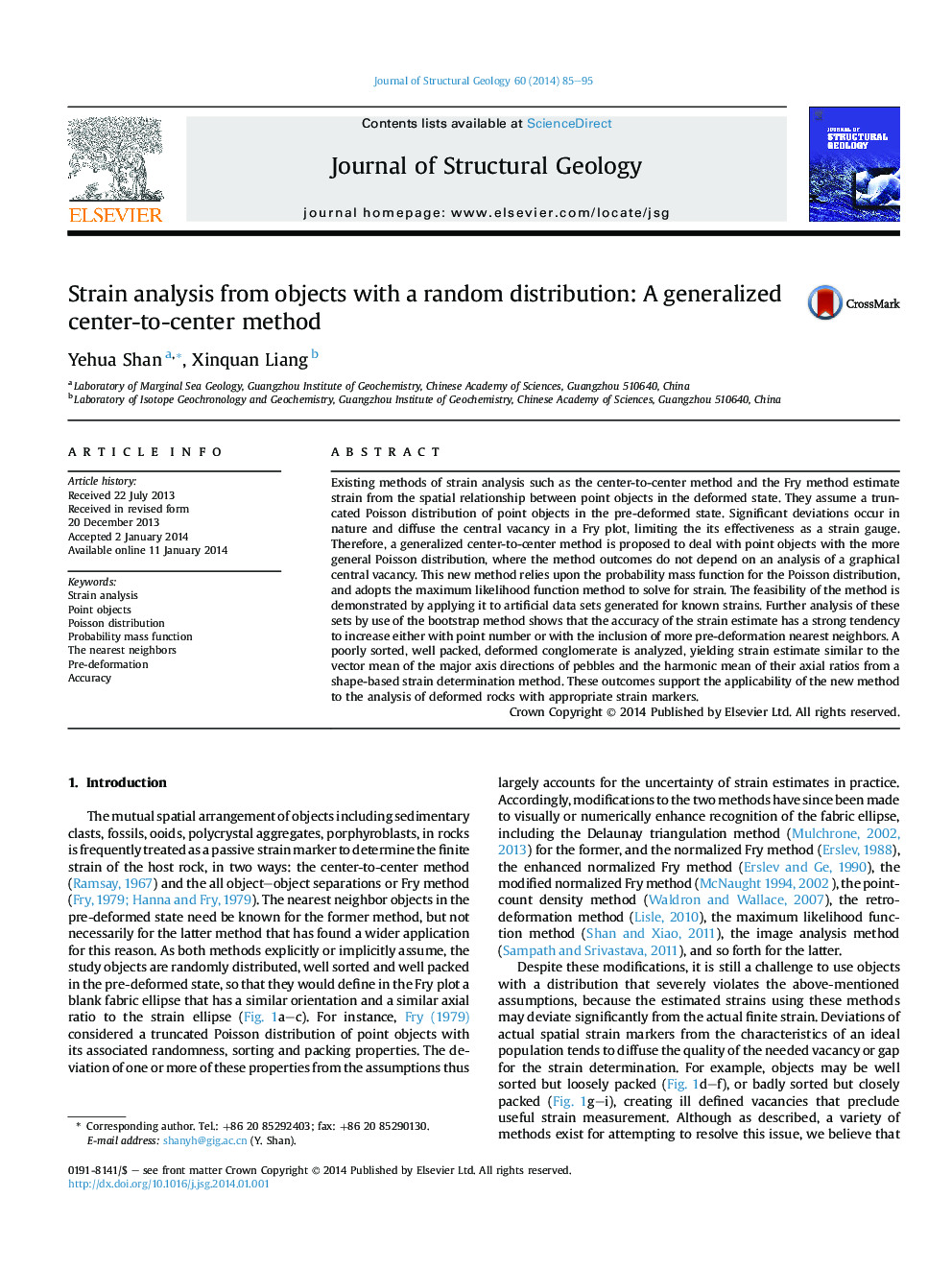| Article ID | Journal | Published Year | Pages | File Type |
|---|---|---|---|---|
| 6444932 | Journal of Structural Geology | 2014 | 11 Pages |
Abstract
Existing methods of strain analysis such as the center-to-center method and the Fry method estimate strain from the spatial relationship between point objects in the deformed state. They assume a truncated Poisson distribution of point objects in the pre-deformed state. Significant deviations occur in nature and diffuse the central vacancy in a Fry plot, limiting the its effectiveness as a strain gauge. Therefore, a generalized center-to-center method is proposed to deal with point objects with the more general Poisson distribution, where the method outcomes do not depend on an analysis of a graphical central vacancy. This new method relies upon the probability mass function for the Poisson distribution, and adopts the maximum likelihood function method to solve for strain. The feasibility of the method is demonstrated by applying it to artificial data sets generated for known strains. Further analysis of these sets by use of the bootstrap method shows that the accuracy of the strain estimate has a strong tendency to increase either with point number or with the inclusion of more pre-deformation nearest neighbors. A poorly sorted, well packed, deformed conglomerate is analyzed, yielding strain estimate similar to the vector mean of the major axis directions of pebbles and the harmonic mean of their axial ratios from a shape-based strain determination method. These outcomes support the applicability of the new method to the analysis of deformed rocks with appropriate strain markers.
Related Topics
Physical Sciences and Engineering
Earth and Planetary Sciences
Geology
Authors
Yehua Shan, Xinquan Liang,
